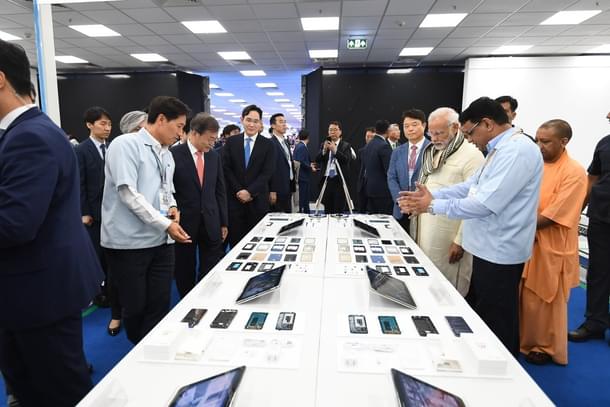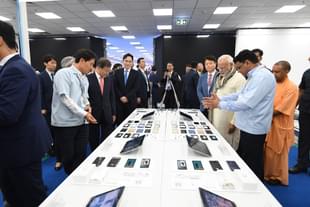News Brief
Government Reduces Import Duty On Mobile Phone Parts To 10 Per Cent: Here's How It Will Benefit The Indian Industry
Nayan Dwivedi
Jan 31, 2024, 01:24 PM | Updated 01:24 PM IST
Save & read from anywhere!
Bookmark stories for easy access on any device or the Swarajya app.


In a significant move, the Indian government has reduced the import duty on components used in mobile phone manufacturing from 15 per cent to 10 per cent.
The list of components benefiting from this reduction includes battery covers, front covers, main lenses, back covers, antennas, sealing gaskets, and cases from PE, PP, EPS, PC and all other individual polymers or combination/combinations of polymers, SIM socket, screw, other mechanical items of plastic and other mechanical items of metal, as reported by Economic Times.
The decision aims to enhance the competitiveness of the Indian mobile phone sector, fostering growth and leveling the playing field with regional competitors like China and Vietnam.
The move is expected to have a positive impact on the mobile phone industry, potentially tripling exports to $39 billion over the next two years.
The Indian Cellular and Electronics Association (ICEA) anticipates that the reduction in import tariffs will drive mobile phone exports from $11 billion in FY23 to $27 billion in FY25.
As part of a broader strategy, the government's Production Linked Incentive (PLI) scheme has already contributed to India's smartphone industry, with exports surging from $7.2 billion in 2022 to $13.9 billion in 2023.
It's important to note that the PLI scheme provides cash incentives for annual incremental production, promoting local manufacturing.
However, the Global Trade Research Initiative (GTRI) cautioned against such cuts, emphasizing the importance of maintaining the current tariff structure for balanced industry growth and long-term development.
The GTRI report highlights that the success of the PLI scheme lies in maintaining a difference in tariffs between smartphones and their components.
It argues that reducing import duties on components could undermine the incentive for establishing robust manufacturing operations in India.
Also Read: Ladakh: Locals Confront Chinese Army Personnel After PLA Blocks Grazing Access Along LAC
Nayan Dwivedi is Staff Writer at Swarajya.





